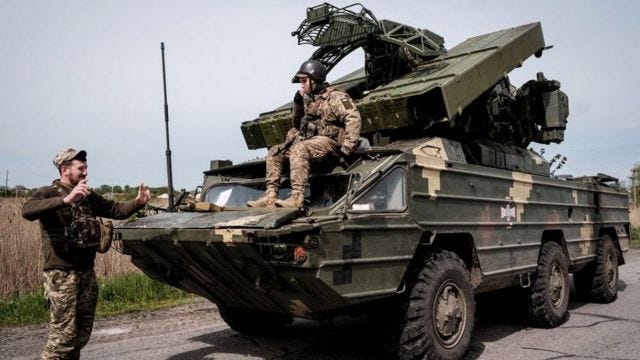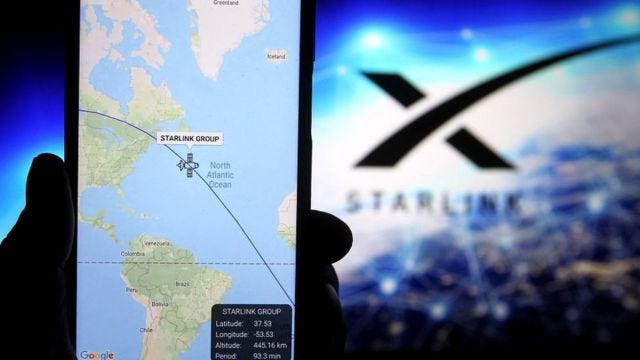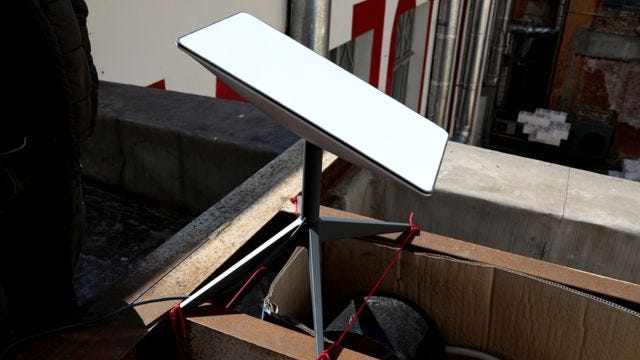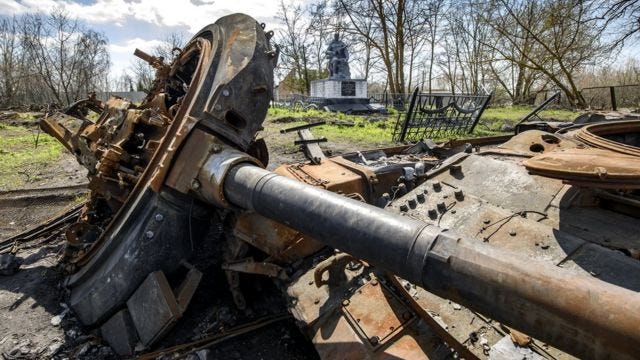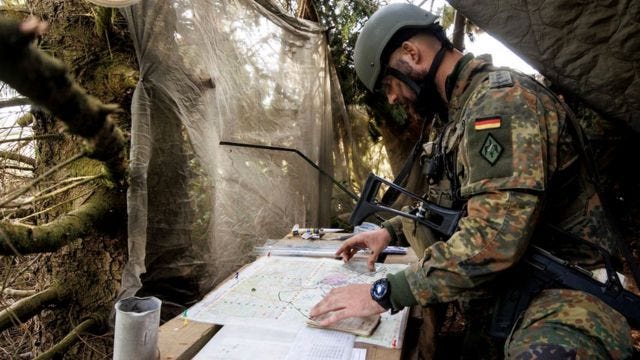Five ways the war in Ukraine is challenging military thinking
The Russian invasion of Ukraine is an important reminder that the age of major wars has not faded into the past.
The war in Ukraine – the first major clash for decades. © AFP
By Pavel Aksenov and Grigor Atanesian
The Russian invasion of Ukraine is the first significant conflict between two comparable armed forces in decades. For politicians and armed forces, it’s an important reminder that the age of major wars has not faded into the past.
Military analysts across the world are now studying the fighting in Ukraine - after all, these events are the realisations of doctrines developed and tested in regional wars or even in exercises. It wouldn’t be an exaggeration to claim that military textbooks are being written on the battlefields of Severodonetsk, Kherson, and Kharkiv.
BBC News Russian looks at five elements of modern warfare, and asks military experts how each will change in light of the war in Ukraine – and the lessons we can learn from them.
1. Anti-aircraft systems are more important than we thought
Air supremacy has been the most important aspect of combat operations ever since the Second World War, and even before. Achieving this is the main goal when starting any war. To gain the upper hand, one first has to destroy the enemy's aircraft and suppress its ground-based anti-aircraft system.
In the Ukrainian war, the Russian air-force was initially superior in both quality and quantity to their Ukrainian counterparts.
Additionally, the Ukrainian Air Defence Force - a branch of the Ukrainian Air Force, is equipped with less powerful systems than the Russian ones.
The strongest weapons in the arsenal of the Ukrainian Air Defence Force were the S-300 medium-range missile systems, which were built back in the 1980s. Alongside these, Ukraine held the Buk M1 (a self-propelled, surface-to-air missile system), the short-range Top-M and S-125, and various other portable and artillery systems.
Meanwhile, Ukraine was building a ‘layered’ anti-aircraft system, which meant that long, medium and short-range systems could operate in a single circuit, with radar-controlled command centres.
The Ukrainian Air Defence Force had outdated Soviet equipment – but it was reorganised systematically. © Getty Images
Ukraine’s anti-aircraft systems were targeted by cruise missiles as well as by Russian aircraft, some of which they managed to shoot down. Russia was unable to wipe out Ukraine’s air defence. Consequently, Russian planes now tend to operate in the frontline zone, with strike aircraft flying at low altitudes to avoid the mid and long-range defence systems.
"The Russian air force is very nervous about coming any further forward than the frontline of Russian forces. It hasn’t gone into the depth of the Ukrainian positions as much as one would have expected. They relied on missiles to do that," said General Sir Richard Barrons, former head of the Joint Command of the British Armed Forces, in conversation with the BBC.
Ilya Kramnik, a Russian military expert and researcher at the Institute of World Economy and International Relations, told the BBC that Russia was not prepared to deal with a layered anti-aircraft system.
“First and foremost,” Kramnik stressed, “Russia prepared for war with an enemy in the image and likeness of NATO. And the NATO bloc has practically no layered ground-based air-defence system – with one or two exceptions – and relies primarily on air power. NATO’s main air-defence system is still fighter planes.
All Russian training relies on the assumption that NATO would open their air defence with strike aircraft, and that Russia would defend itself with anti-aircraft systems. Russia was unprepared to open the enemy's defences, as there is effectively a domestic air-defence system," Kramnik added.
The Ukrainian war demonstrated the capabilities of layered air defence, and attitudes towards it have begun to change in the West.
The countries of the Alliance began to develop NATO’s Integrated Air and Missile Defence in the 1960s. It is currently a unified air-and-missile defence system, with a common command and a system of radars, missile launchers, and airfields.
However, due to the war in Ukraine, the US Congress will consider strengthening their defences by obtaining more funding to procure existing Patriot anti-ballistic missile systems for the European theatre.
At the same time, the United States is working on a new layered air-defence system for the theatre of military operations – the Integrated Air and Missile Defence Battle Command System (IBCS). The plan is for this to become part of a large-scale command and information structure for missile defence – Command and Control, Battle Management, and Communications (C2BMC), which the Americans are currently building for their own use.
All over the world, attitudes towards air defence are changing, with Ukraine’s successful response being a key incentive for change. On the other hand, this success may lead to a further question: just how ready are NATO countries to combat a layered anti-aircraft system?
Russia has more advanced anti-aircraft and anti-missile systems, and in the event of a military conflict with NATO there is no guarantee that its air defence could be easily suppressed. The US have exercised tactics of breakthrough and suppression of air defence ever since the Vietnam war, using specially-designed weapons.
The Russian Air Force have anti-radar missiles too, although clearly this did not lead them towards a major victory in Ukraine. It’s hard to say what conclusion will be drawn in terms of developing fighter aircraft.
Until this point, ground systems have beaten aviation outright, argues Maxim Starchak, a fellow at the Centre for International and Defence Policy Studies at Queen's University in Canada
“Ukraine is protecting its outnumbered forces – air battles are too much of a risk for both sides. This war has shown us that it’s much more effective to use missile systems to attack objects, as well as for countering aircraft,” he tells the BBC.
2. The information network – it’s not just about the Internet.
A worldwide internet prototype appeared at the very end of the 1960s; an American military project. The idea was to develop a reliable means of data transmission.
In recent years various countries have switched off the Internet or severely restricted access in times of war, mass protests, and civil unrest – for example, this happened in Azerbaijan during the Karabakh war in 2020, and in Belarus during the 2020 protests. In the Indian state of Jammu and Kashmir, riots led to an high-speed Internet blackout that lasted for one and a half years.
However, nothing like this has happened in Ukraine – both sides have been using the Internet, and neither managed to cut off enemy access to it by means of electronic warfare, notes General Sir Richard Barrons.
Experts believe we shouldn’t dismiss the Russian army’s combat capability, despite their failures in Ukraine. © AFP
“Both sides in Ukraine have made great use of the Internet for command and control and supporting their operations,” says Barrons. “Now we're beginning to see how much effort has to go into keeping the Internet up in the interests of fighting the war successfully”.
In recent years many countries have designed special information systems, known as C4ISR in the US (Command, Control, Communications, Computers, Intelligence, Surveillance and Reconnaissance.)
The idea is to create a kind of unified information space on the battlefield. Such a space should help to exchange operational intelligence in an effective way – using a variety of sources, processing the intelligence, and managing the various means of warfare that the system encompasses.
The Ukrainian Armed Forces use the local GIS “Arta” information system at the front, which is limited to artillery. It’s hard to be sure how big the system is. Judging by press-releases and the official website, it was developed by Ukrainian programmers and British computer-mapping companies.
GIS “Arta” is first and foremost a geoinformation system, a kind of online map where information is tied to certain physical locations. It collects information from multiple sources – such as drones, data from ground detachments, and radar – before processing it and issuing target destinations to artillery batteries, and selecting the most convenient target to attack.
Moreover, several batteries and even individual guns can fire at one target at once. You could even compare it to an online taxi service, where the closest cab is driven straight to the customer.
The Ukrainian military state that it was GIS “Arta” that helped them with the attack on the crossing of the Siverskyi Donets river at the beginning of May, when a lot of Russian military equipment was destroyed. However, it is impossible to verify this whilst the war is still ongoing.
Building this calibre of information system became possible after Elon Musk’s ‘Space X’ company transferred hundreds of terminals for Starlink satellite Internet to Ukraine. These terminals communicate via satellite with ground stations connected to the Internet.
As Russian science journalist Mikhail Kotov told the BBC, Starlink’s ground stations can even operate outside Ukrainian territory, on the border with Poland and Romania. They have a coverage range of up to 400km.
“Communication specialists talk about a ‘last mile,’” he explains, “That means that the Internet is delivered directly to the client. By and large, Starlink is the last mile. The Internet – with the help of optic fibres – reaches the final station, it transmits a signal to the satellite, which is located above the ground station and above the client, and from there it is transmitted directly to the antenna."
Starlink terminals have been widely used by the Ukrainian Armed Forces, and even the defenders of Azovstal, who were able to transmit videos, photos and other information to the Internet.
Starlink terminals are widely used by the Ukrainian Armed Forces. © Getty Images
Starlink became a real saviour for the Ukrainian Armed Forces, as the American telecommunications satellite network they’ve relied on, Viasat, was disrupted by a mass hacker attack at the beginning of the war. The British Government claims that Russia’s intelligence services were behind the attack.
At the beginning of the invasion of Ukraine, there was no evidence of active use of electronic warfare (EW) by Russian troops, says Whitney McNamara, a non-resident senior fellowat the Washington Centre for Strategic and Budgetary Assessments in an interview with the BBC. She suggests that if the initial invasion plan was based on an assumption of minimal resistance on the part of the Ukrainian army, then electronic warfare was considered unnecessary.
Yet now – three months later – specialists see signs of the use of electronic warfare, and the co-ordination of these measures with the actions of other units. McNamara stresses the fact that Russia has actively modernised electronic warfare in recent years, with Russian officers gaining experience in Syria, and in Ukraine (between 2014 and the start of the full-scale invasion.)
"It’s clear however they’re not unleashing or leveraging their full spectrum of EW capabilities since the Russian forces in theatre are not trained well to leverage it and are still struggling to use it without jamming their own platforms, which is a challenge not unique to Russia," McNamara said.
For Western armed forces, this shows the challenges associated with electronic warfare. According to McNamara, due to the rapid development of commercial and military tools that use the electromagnetic spectrum, armies can no longer rest assured that their units will be able to communicate successfully with each other on the battlefield.
Nevertheless, Russia has fairly powerful electronic warfare systems. Russian systems tried to smother the Starlink signal in March, but SpaceX specialists, according to the Pentagon, were able to overcome the problem.
"The next day [after reports about the Russian jamming effort hit the media], Starlink had slung a line of code and fixed it. And suddenly that [Russian jamming attack] was not effective anymore. From [the] EW technologist’s perspective, that is fantastic … and how they did that was eye-watering to me," Dave Tremper, director of electronic warfare for the Office of the US Secretary of Defense, was quoted as saying.
“Artillery is one of the most effective means of destruction in the Russo-Ukrainian war. Precision and speed of determining targets are key factors in counter-battery warfare. The role of the Internet in supporting and reinforcing warfare has turned out to be high – and it’s likely that this will have a great impact on the development of information networks on the battlefield, as well as on the improvement of electronic weapons with the capacity to resist these networks.”
Drones became so important that special weapons were developed to combat them. © Getty Images
"The Russian investment in electronic warfare generally far exceeds the investment most European countries have made so far,” suggests General Barrons.
These measures were supposed to combat drones, such as the Turkish Bayraktar TB-2.
He recalls that these drones played an important role during the Nagorno-Karabakh conflict in 2020, which everyone expected Russia to learn from. However, this is not happening on the scale that experts expected - and the Ukrainian forces regularly publish videos of attacks from strike drones and ‘artillery-fire adjustment’ from commercially-available drones.
What do militaries around the world take away from this? There is an essential need to develop a means of combatting drones. Moreover, we aren’t just talking about anti-aircraft systems and electronic warfare, but also of aerial “dogfights” between drones.
Barrons suggests that Russia will actively develop these means and increase its own fleet of drones, opening a new front in the arms race.
“it's hard to say what happened - either the Russian army didn’t incorporate electronic warfare in their initial plan, or its technical capabilities weren’t what we expected”, says Rob Lee, a senior fellow at the Foreign Policy Research Institute in the US.
However, he notes that Russian forces are also actively using commercially-available drones, which will play a role in future wars for which NATO countries should be prepared.
3. Intelligence in a new ‘transparent world’
The current war in Ukraine is the first large-scale fight between armed forces in many decades, in which a hefty arsenal of surveillance methods have been deployed. Satellite images, drone data, reconnaissance planes and other sources of information that are already commonplace in the military are now supplemented with data taken from social networks.
The internet made it possible to conduct intelligence on any ordinary laptop. © Getty Images
"The first lesson of this war is that the world is essentially now transparent," claims General Sir Richard Barrons. He points out that it was images taken primarily by commercial – not government – satellites, as well as social networks and other open-access data – that showed everyone the build-up of Russian forces on the Ukrainian border at the end of 2021 and the beginning of 2022.
"It was absolutely clear that the forces required to make an invasion were there. And that's quite unlike how we would have operated in the Cold War, where you might hope that you could move a fleet or an armoured division or a large number of aircraft undetected until you chose to use them.
"A transparent battle space is now a fact of life."
The gathering of intelligence from open sources is called OSINT (Open Source Intelligence). A recent report by the Royal United Services Institute (RUSI) explores how Russia’s invasion of Ukraine in 2022 marks a gradual shift in the approach of Western governments towards intelligence.
OSINT is cheaper than traditional investigative methods, but is not intended to replace them. On the contrary: data from open sources, the media and research groups like Bellingcat can be used to confirm secret reports, and vice versa.
"Governments, if they are smart, will make more of an effort to use OSINT. It's important because they don't have to worry about declassifying intelligence because a lot of it is public information. This really helped the UK and US governments in the build-up to this war - they didn't have to declassify information, they could just take it and show why they were discussing an imminent Russian attack on Ukraine," says Rob Lee.-
The military began using spy satellites back in the 1960s. One of the conundrums their developers faced was how to transmit information back to earth. Previously, many devices simply dropped capsules with captured photographic film, which were then either intercepted mid-flight or retrieved from the ground.
With the development of data-transmission technology, this problem has gradually become less pressing, though many others have emerged.
Modern ‘remote-sensing satellites’ – which photograph or receive information using infra-red or radar sensors – transmit quite a lot of information which has to be processed as quickly as possible.
Starlink’s terminal in Odesa - a small antenna that receives a satellite signal. © Getty Images
As Mikhail Kotov explains, such data is processed in different ways. “If only an image is needed, information may not need to be processed at all. Naturally, sometimes convolutional neural networks (AI systems designed to process images) are used, particularly in the search for objects like military equipment. With such a high volume of images it’s hard for a human to see everything. Convolutional neural networks are able to pick out objects of interest automatically – a person can only view what they’ve identified."
The list of military supplies to Ukraine published by the Pentagon in May included the services of commercial satellite images of Earth. Significant funds were allocated for this purpose. This is a new aspect of modern warfare – key information, which becomes crucial on the battlefield, is supplied on commercial terms by big space companies like Planet and Maxar.
Overall, the American authorities receive information from 200 commercial satellites, and the images go directly to the US military command and to Ukraine, according to the NGA, the American geospatial intelligence agency..
The US is definitely helping Ukraine with satellite data, but that is a sensitive subject seen as a potential source of escalation with Moscow. Perhaps this is partly why the images are purchased from for-profit companies, rather than taken directly from military satellites.
In early May, the American press reported that the US had apparently provided Ukraine with the coordinates of the Russian cruiser "Moskva" before she was sunk. NBC, the Washington Post and the New York Times all carried the story, based on what they said were official sources.
The Ukrainian Armed Forces fired missiles at the cruiser after, having asked the Americans for information, it was reported. They suggest that it was the United States who helped to identify the ship and determine her position, so that the strike could be carried out. The final decision to strike was made by the Ukrainian military.
The Pentagon’s Press Secretary, John Kirby, tried to present this story in a slightly different light." The Ukrainians have their own intelligence capabilities to track and target Russian naval vessels, as they did in this case", said Kirby.
It is not known how the US managed to locate the ‘Moskva’ – there were, however, NATO reconnaissance planes operating in this region, capable of shadowing the cruiser. In any case, Ukraine got hold of invaluable intelligence, which significantly affected the course of the conflict – irrespective of which side pushed the final button.
4. Precision weapons – how precise are they really?
According to General Barrons, the war in Ukraine demonstrated the possibility of using precision-guided munitions to destroy not only ships, tanks and planes, but also headquarters and government buildings – sometimes from hundreds of kilometres away.
This isn’t news, but precision weapons have gained particular importance in the new, transparent world of satellite data, where almost any target is vulnerable to missile strikes.
However, Barrons stresses that this war has shown that cruise and ballistic missiles have to be used sparingly – they are simply too expensive, and stocks are rapidly draining. In a large-scale war, such weapons have to be combined with conventional weapons, which are cheaper and exist in larger numbers.
“There is absolutely no doubt that the vital lesson for NATO from the war in Ukraine will be – don’t underestimate artillery,” said General Barrons.
In his words, before this war, some believed that modern warfare could be carried out without traditional artillery, using only precision weapons. Barrons suggests that Western armies have been “to some degree led astray” by the war on terror, and by their recent interventions in Iraq, Afghanistan, and the Balkans.
In these situations, NATO’s opponents were forces who didn’t have air forces, navies or high-quality artillery - to say nothing of space potential. Aviation, precision bombs, combat attack drones and special-forces units were strong enough to combat them – a rule of thumb many experts believed would apply to other conflicts.
However, according to Storchak of Queen’s University, Russia’s inability to destroy Ukraine’s military infrastructure during the first three months of war, despite the massive use of cruise missiles, indicates the low quality of these missiles.
"Russian missiles are both of insufficient quality and [insufficiently] effective. Periodically, they don’t launch or explode during flight, and if even they reach their intended target, they miss it due to their lack of accuracy. Poor strike accuracy is the general scourge of the entire Russian missile industry," Storchak believes.
Furthermore, a cruise missile strike may not always destroy an infrastructure facility, adds Rob Lee. He points out that destroyed bridges can sometimes be rebuilt, that factories can continue production even after a missile strike, and that damage is not always irreparable.
Aviation would have been better suited to the destruction of such targets, Lee argues, but Russian pilots do not stray far beyond the front line, fearing Ukrainian gunners.
5. Tanks – weapons from the last century?
Burnt-out tanks by the roadside – both Russian and Ukrainian have become one of the symbols of this war. A lot of videos are published on social media and by the press, featuring the destruction of heavy-armoured vehicles by various light anti-tank weapons.
The Ukrainian army had already begun to receive light weapons from the west before the Russian invasion. These included American and British anti-tank systems (‘Javelin’ and ‘NLAW’) and many others from various countries. There is a lot of video footage featuring the Ukrainian anti-tank system 'Stugna.'
These recordings created an impression of ‘Javelin’ and ‘Stugna’ as fail-safe weapons, deadly enemies of armoured vehicles. In reality, the fate of a tank after being hit by a missile often remained unknown, since no evidence of its destruction appeared in the footage.
© Getty Images
On the other hand, there is much open-source intelligence suggesting that tanks often fell foul of artillery – rather than anti-tank systems – as was the case at the crossing of the Siverskyi Donets river.
Be that as it may, the heavy losses of armoured vehicles by both armies in this war revived a position shared by many military experts worldwide: that the tank is an outdated weapon, which has no place on the modern battlefield.
One such expert is Lieutenant General Raj Shukla, former chief of the Indian Army Training Command. In his article ‘Military Lessons from the Ukrainian Conflict,’ he writes that modern anti-tank devices put an end to the evolution of tanks in battle.
“Russian tank columns that came close to Kyiv and the airport were ambushed and stalled by drone attacks.... The Bayraktar TB2 drones proved to be useful in targeting Russian tanks, artillery, SAM launchers, and logistic columns. The Switchblade-Puma (recce drones) combination of two-man teams allowed the engagement of Russian tanks from a safe distance of 5–6 kilometres. Tanks with four-man crews [Russian tanks have three-man-crews – BBC] inside were near defenceless before these drone assaults, he writes.
“Tank warfare, therefore, has been challenged yet again, this time by a lethal combination of anti-tank systems and a variety of drones. The Ukraine conflict gives us enough evidence, to suggest that the tank is somewhat of a 20th-century platform, trying to find its place on the 21st-century battlefield; without urgent technological enablement, its difficulties will only grow," believes the Indian military commander.
Maxim Storchak agrees with Shukla, noting that tanks can only be successfully used in close combination with other military equipment and weapons.
“Tanks are effective alongside attack helicopters and airplanes. But we’re getting into a vicious circle - the importance of missile strikes has increased, whilst the probability of a direct confrontation between tanks has decreased. Aviation is rarely used. Tanks are generally ineffective. [...] The tank essentially becomes a carrier of a negligible amount of ammunition, which is easy to hit when not backed up by air-cover," Storchak believes.
However, tanks still have plenty of fans. Ukrainian armoured vehicle expert, Andrei Tarasenko, believes that it’s too early to write off the tank entirely.
Are tanks going out of fashion? Ukraine still seeks supplies of armoured vehicles from the West. © Getty Images
In Storchak’s words, the tank is no different from other battlefield equipment, requiring excellent crew training. Tank losses are often due to mistakes by the crew, or the unit-commanders.
“No offensive – or even defensive – operation is possible without support from tanks. It is psychologically, as well as tactically, impossible. The tank has always survived in some form. In the past, the cavalry played a similar role, because of the mobility, the ability to strike a mighty blow,” he said.
According to Tarasenko, “the tank, if well-prepared, is fully protected from the majority of anti-tank weapons, if not from all of them. It needs to be accompanied by well-trained infantry. It goes both ways: the tank becomes a means of reinforcement for the infantry, whilst the soldiers themselves defend the tanks from ambushes with anti-tank missiles.”
Finally, the misgivings of those who oppose tanks on the battlefield are in contrast to Ukraine’s persistent attempts to get hold of armoured vehicles from western countries. Kyiv would even like to receive the outmoded 1980s German ‘Leopard-1’ – which Rheinmetall is willing to supply from its reserves, yet cannot do before receiving permission from the German government.
Russia is also sending fresh tanks from its reserves into the combat zone, and in recent weeks there have been press reports that its arsenal includes outdated vehicles.
The end of a comfortable era
The performance of the Russian army in Ukraine has been considerably poorer than experts anticipated. However, whilst many observers, politicians and analysts agree on this basic point, they draw different conclusions.
Many figures in western governments – and crucially, in treasuries – would like to think that the Russian army is weaker than was thought, and has exhausted itself in Ukraine, and that consequently, there is no need to increase defence spending, argues General Barrons.
A NATO troop exercise – lessons will be learned from Ukraine. © Getty Images
Barrons urges people to remember the histories of other armies – for example, the US army, which had seriously deteriorated by the end of the Vietnam war in the 1970s. And yet the First Gulf War in 1991 marked the emergence of a completely different force. "The US Army had mastered shock and awe, and it was a wholly different, highly accomplished force at every level in leadership, equipment, training and logistics".
Therefore, going forward, western countries shouldn’t base their strategic response on how the Russian army appeared at the beginning of the invasion of Ukraine, but on the level they could reach by learning from their mistakes. Sir Richard believes that the West will then see the need to modernise their own forces, taking into account new digital technology as well as conventional weaponry.
“There still will be a Russian threat if President Putin and his entourage remain in power. But an even more important opponent will be China. The Western nations’ own documents already treat Russia “as essentially a speed bump on the way to dealing with the challenge of the rise of Asia, particularly China,” says Sir Richard.
“A comfortable post-Cold War has expired. Well, I think it expired about five years ago, but it's definitely expired now.”
“Defence communities tend not to deal in nuance,” writes Michael Kofman, director of the Russia program at the Centre for Naval Analyses in the US. Whilst western experts may have previously overestimated Russia’s military power, they are now more likely to underestimate it as a result of the invasion of Ukraine.
“Were the alliance similarly tested, NATO armed forces could find that they, too, have many of the problems Russia has had in Ukraine,” the analyst suggests.
You can read this story in Russian here.
Translated by Pippa Crawford.





